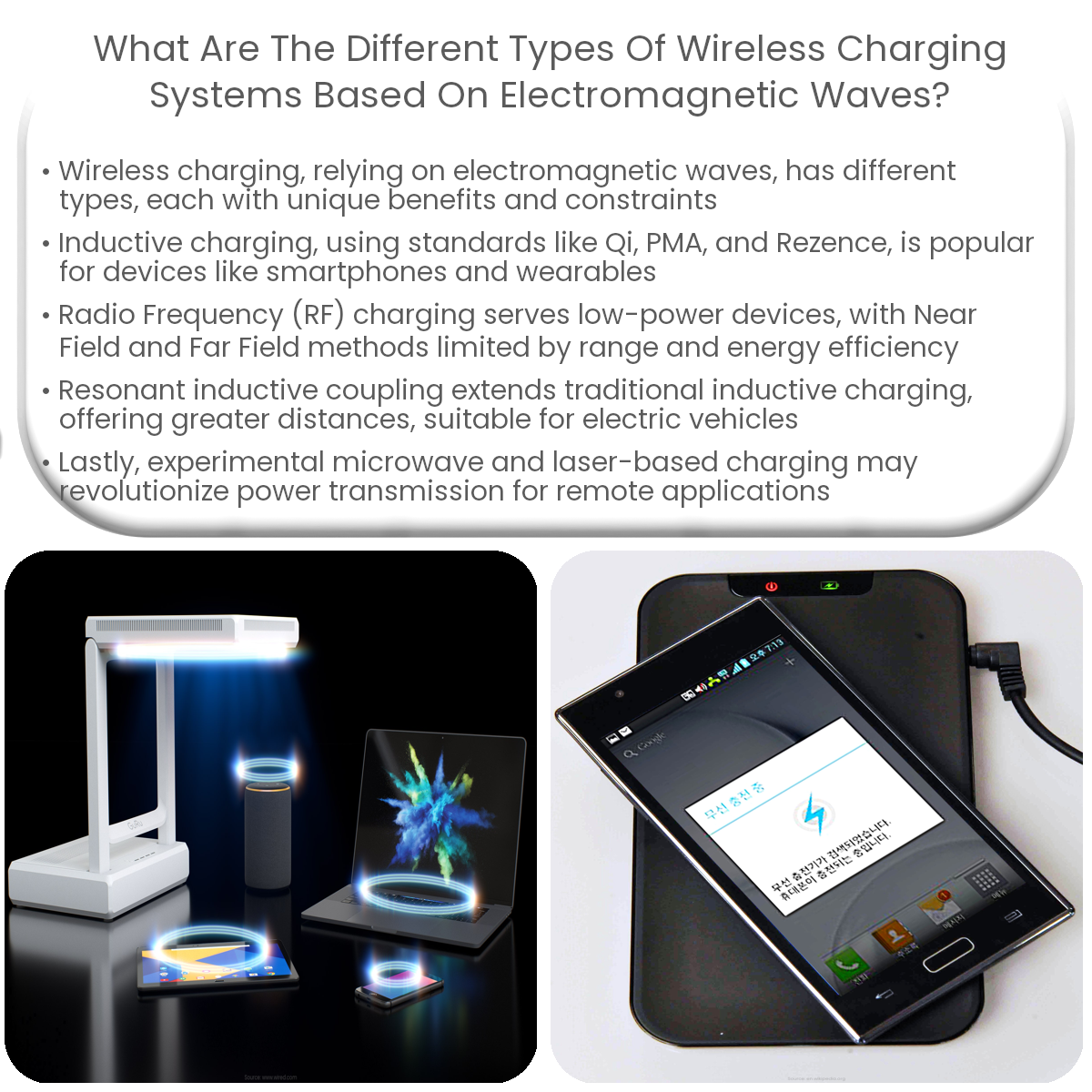The main types of wireless charging systems are inductive charging (Qi, PMA, Rezence), radio frequency charging, resonant inductive coupling, and microwave/laser-based charging.
Understanding Different Types of Wireless Charging Systems Based on Electromagnetic Waves
Wireless charging is rapidly gaining popularity due to its convenience and ability to power up devices without the need for physical connectors. This technology is based on electromagnetic waves, which transmit energy between two coils – one in the charging pad and another in the device. Let’s explore the different types of wireless charging systems that leverage electromagnetic waves.
1. Inductive Charging
- Qi Standard: Developed by the Wireless Power Consortium (WPC), the Qi standard is the most widely adopted inductive charging method. It operates on a frequency of around 100-205 kHz and supports charging distances up to 40mm. Qi is commonly found in smartphones, wearables, and other consumer electronics.
- Power Matters Alliance (PMA): Another inductive charging standard, PMA operates on a frequency of around 277-357 kHz. Although not as popular as Qi, PMA is still used in some smartphones and public charging stations.
- Rezence: This standard, developed by the Alliance for Wireless Power (A4WP), uses a different approach called magnetic resonance. It allows for more flexible charging distances and the ability to charge multiple devices simultaneously. However, it is not as widely adopted as Qi or PMA.
2. Radio Frequency (RF) Charging
- Near Field (NF): This method uses the 13.56 MHz frequency and is mainly employed for low-power devices, such as wearables and medical implants. NF charging is limited by its short range, typically less than 1 cm.
- Far Field (FF): Also known as RF energy harvesting, this method leverages ambient RF signals from sources like Wi-Fi routers, cell towers, and TV broadcasts to power devices. It is suitable for very low-power devices, such as sensors, but has limited practical applications due to its low energy transfer efficiency.
3. Resonant Inductive Coupling
Resonant inductive coupling is an extension of traditional inductive charging, utilizing specially tuned coils to transfer power over greater distances. This method enables charging ranges up to several centimeters, making it ideal for applications like electric vehicles and larger consumer electronics. The WiTricity and Cota systems are examples of resonant inductive coupling technology.
4. Microwave and Laser-based Charging
These advanced wireless charging methods use microwaves or lasers to transmit energy over long distances. Although still in the experimental stage, they have the potential to revolutionize wireless power transmission, particularly for remote or inaccessible locations, such as satellites or drones.
In conclusion, the various types of wireless charging systems based on electromagnetic waves each have their unique advantages and limitations. As technology continues to advance, we can expect further improvements and new applications for wireless power transmission.


